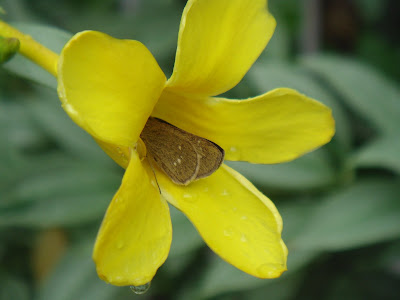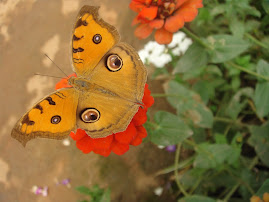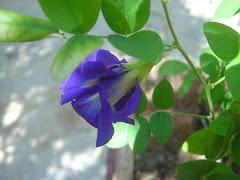
Welcome!! It's time to display our blooms again! I found this
red and black dragonfly and I thought it'd make a great welcome
picture. To see what's blooming in gardens across the world,
please visit our gracious host, Katarina at
Roses and Stuff.

I'd brought this gladiolus plant from my mother's garden in
July. All the plants had finished blooming (then) and I only
got to see some drying-on-the-plant flowers. But I did get a
tiny plant with a few leaves (three, I think) and brought it home.
Well, I didn't expect it to bloom this year but gardens never
fail to throw in a few surprises from time to time.

Honestly, I thought the bloom was going to be in one colour.
But the pink lines make it look rather special. These plants
are common in the hilly areas (like my hometown) but I admit
I've never grown them. You see them in most gardens or on the
edge of gardens spilling on to the road.

As I photographed the buds yesterday, the heat of the afternoon
sun was so intense that I had to rush back in. Thankfully, it
rained last night and getting to photograph any bloom with raindrops
still on it, is a gardener's delight!
At the back you can see the Sunset Bells, still providing a great
deal of colour. The idea is that when the summer colours fade, other
plants will take over:) It's a small circular bed but the photographs
give the impression of a little more space....

This photo was taken early this year in February. This is to
show the glads I grew after buying the corms from a local nursery.
This variety is not found in the wild.

As for other blooms, the pink and white four o'clocks are
blooming in these colours. Some are pure white, some have
a tinge of pink. It's interesting to see the blooms.


The yellow ones are also blooming...the scent in the evenings
is wonderful. I'm waiting for the hummingbird moths to come.
So far there's been no sign of them. Still hoping......
Have a great weekend, everyone! And thank you for checking out
my "Blooming Friday" post.




























































































.jpg)





























